Will Pfeifer's Blog, page 32
May 14, 2013
Pre-Code Favorites, Part 1: The fellas
If forced at gunpoint to choose my favorite film period (and I fully expect this sort of thing to happen someday), I'd go with the so-called Pre-Code era, that time between the acceptance of sound films (around 1929-1930) and the enforcement of the Production Code (which had been on the books since 1930 but wasn't enforced until 1934, when a bunch of obnoxious Catholic buttinskis ended all the fun.) In those few glorious years, movies actually seemed to be made for grown-ups, with healthy dollops of sex and violence spicing up stories that contained mature themes, complex relationships and a semi-realistic portrayal of life in these United States. (Read more -- a lot more -- about the Pre-Code era -- here.)
Those Pre-Code movies had a spark that few other films seem to exhibit, combining the enthusiasm of an artform finding its feet with the thrill of some talented and daring creative types getting one over on the bluenoses. That vitality was in no small part due to the actors and actresses who starred in them. Some were huge Hollywood legends just starting out, some were silent era performers having a last hurrah, and some were quickly forgotten despite whatever fame they once had. Today, I'm listing 11 of my favorite Pre-Code actors, along with some movies showing them at their best. In the next post, I'll celebrate the ladies of the era.
Unless you're a real film geek, you've probably never heard of most of the movies on this list. Consider them highly recommended. Many are on DVD (try the fine folks at Warner Archives).
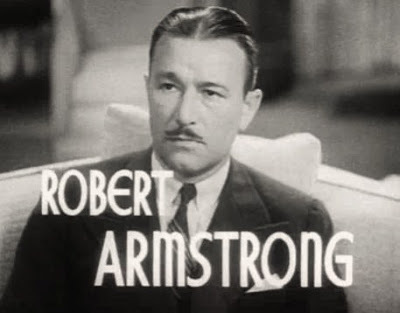
Robert Armstrong: "King Kong" (of course), "The Most Dangerous Game," "Is My Face Red," "Fast Workers"
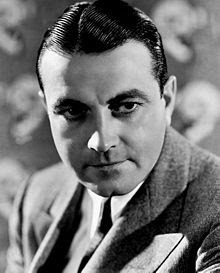
Richard Barthlemess: "Heroes for Sale," "Massacre," "Alias the Doctor"
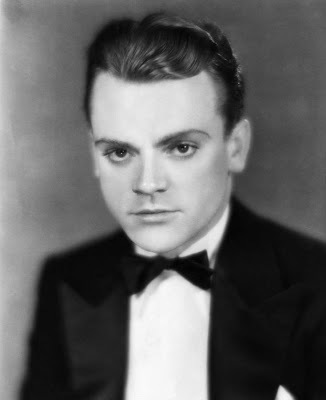
James Cagney: "The Public Enemy," "Picture Snatcher," "Taxi!," "Footlight Parade," "Hard to Handle," "Blonde Crazy"
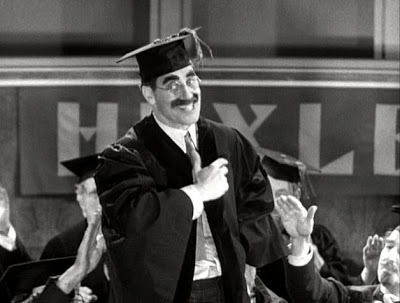
Groucho Marx: "Duck Soup," "Horsefeathers," "Monkey Business," "Animal Crackers" and "The Cocoanuts." (Obviously, I prefer the rough-and-tumble anarchy of the Paramount Pre-Codes over the slicker movies the Marxes made at MGM.)
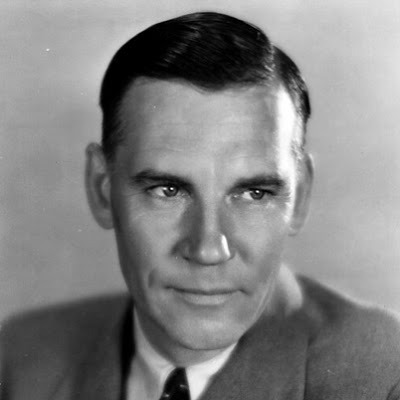
Walter Huston: "Gabriel Over the White House," "The Criminal Code," "American Madness," "Beast of the City," "Kongo"
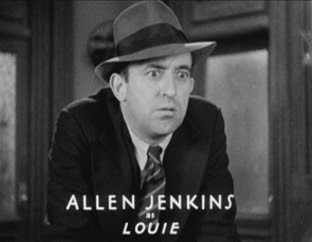
Allen Jenkins: "Three on a Match," "Employees' Entrance," "I Am a Fugitive from a Chain Gang," "Blondie Johnson," "Havana Widows," "The Mind Reader," "42nd Street"
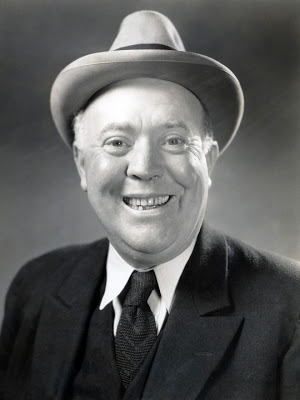
Guy Kibbee: "Fireman Save My Child," "42nd Street," "Taxi!," "Gold Diggers of 1933," "The Strange Love of Molly Louvain," "Footlight Parade," "Havana Widows"
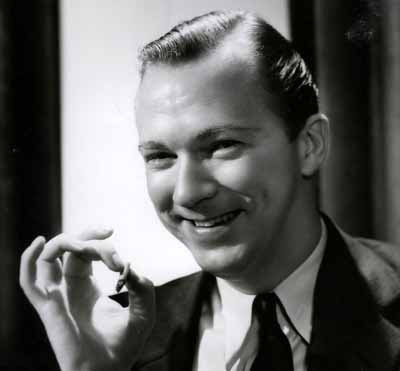
Lee Tracy: "Doctor X," "Blessed Event," "Washington Merry-Go-Round," "The Half-Naked Truth," "The Strange Love of Molly Louvain," "Clear All Wires," "Turn Back the Clock"
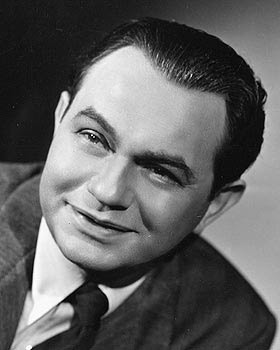
Edward G. Robinson: "Five Star Final," "Little Caesar," "Smart Money," "Two Seconds," "The Hatchet Man," "The Little Giant" (If forced -- once again, at gunpoint, to choose my favorite actor of all time, I think I might go with Eddie G. Decade after decade, he delivered great performances in dozens and dozens of films.)
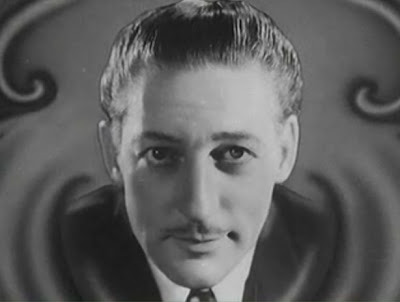
Warren William: "The Mind Reader," "Gold Diggers of 1933," "Employees' Entrance," "Under 18," "The Mouthpiece," "Three on a Match," "Skyscraper Souls"
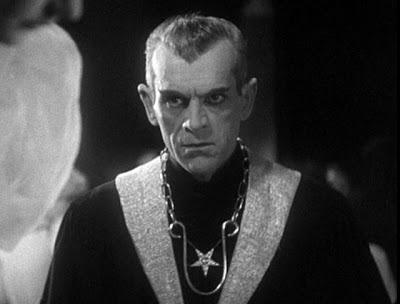
Boris Karloff: "Frankenstein," "The Black Cat," "Five Star Final," "The Criminal Code," "Night World," "The Mask of Fu Manchu," "The Mummy"
Those Pre-Code movies had a spark that few other films seem to exhibit, combining the enthusiasm of an artform finding its feet with the thrill of some talented and daring creative types getting one over on the bluenoses. That vitality was in no small part due to the actors and actresses who starred in them. Some were huge Hollywood legends just starting out, some were silent era performers having a last hurrah, and some were quickly forgotten despite whatever fame they once had. Today, I'm listing 11 of my favorite Pre-Code actors, along with some movies showing them at their best. In the next post, I'll celebrate the ladies of the era.
Unless you're a real film geek, you've probably never heard of most of the movies on this list. Consider them highly recommended. Many are on DVD (try the fine folks at Warner Archives).

Robert Armstrong: "King Kong" (of course), "The Most Dangerous Game," "Is My Face Red," "Fast Workers"

Richard Barthlemess: "Heroes for Sale," "Massacre," "Alias the Doctor"

James Cagney: "The Public Enemy," "Picture Snatcher," "Taxi!," "Footlight Parade," "Hard to Handle," "Blonde Crazy"

Groucho Marx: "Duck Soup," "Horsefeathers," "Monkey Business," "Animal Crackers" and "The Cocoanuts." (Obviously, I prefer the rough-and-tumble anarchy of the Paramount Pre-Codes over the slicker movies the Marxes made at MGM.)

Walter Huston: "Gabriel Over the White House," "The Criminal Code," "American Madness," "Beast of the City," "Kongo"

Allen Jenkins: "Three on a Match," "Employees' Entrance," "I Am a Fugitive from a Chain Gang," "Blondie Johnson," "Havana Widows," "The Mind Reader," "42nd Street"

Guy Kibbee: "Fireman Save My Child," "42nd Street," "Taxi!," "Gold Diggers of 1933," "The Strange Love of Molly Louvain," "Footlight Parade," "Havana Widows"

Lee Tracy: "Doctor X," "Blessed Event," "Washington Merry-Go-Round," "The Half-Naked Truth," "The Strange Love of Molly Louvain," "Clear All Wires," "Turn Back the Clock"

Edward G. Robinson: "Five Star Final," "Little Caesar," "Smart Money," "Two Seconds," "The Hatchet Man," "The Little Giant" (If forced -- once again, at gunpoint, to choose my favorite actor of all time, I think I might go with Eddie G. Decade after decade, he delivered great performances in dozens and dozens of films.)

Warren William: "The Mind Reader," "Gold Diggers of 1933," "Employees' Entrance," "Under 18," "The Mouthpiece," "Three on a Match," "Skyscraper Souls"

Boris Karloff: "Frankenstein," "The Black Cat," "Five Star Final," "The Criminal Code," "Night World," "The Mask of Fu Manchu," "The Mummy"
Published on May 14, 2013 18:22
May 11, 2013
Great Moments in Comics History, Part 21
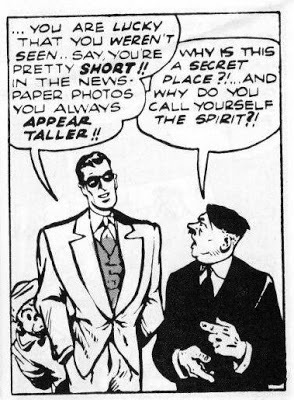
The Spirit and his sidekick Ebony meet Adolf Hitler.
The Spirit, June 22, 1941, story and art by Will Eisner (and the various artists and writers working in his studio).
Published on May 11, 2013 10:00
May 4, 2013
Movies I watched in April
For some reason,* I only watched a handful of movies this month. But you have to admit, while the April list is far from extensive, it is pretty damned eclectic.
* the return of "Mad Man," "Game of Thrones," "Veep" probably, along with a long weekend spent with my buddies at C2E2.
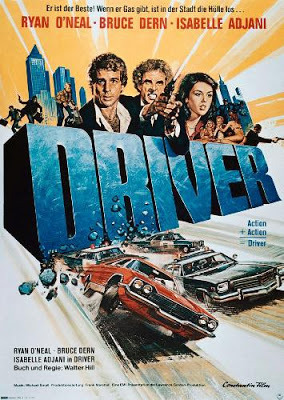
I love looking at that poster and imagining some action-starved movie lover buying his ticket, sitting down in the theater and being confronted with Walter Hill's notoriously slow-paced drama about a stoic driver (Ryan O'Neal) and the somewhat more excitable cop (Bruce Dern) pursuing him. An obvious influence on last year's "Drive" (right down to the bare-bones title), it's not as stylish and, frankly, a tad on the boring side. (Ryan O'Neal isn't exactly Ryan Gosling.) But the driving scenes are still impressive (especially one where O'Neal deliberately destroys the car he's driving) and it has just enough oddball touches to make it worth watching. It's not, however, the movie that poster is promising. Consider yourself warned.
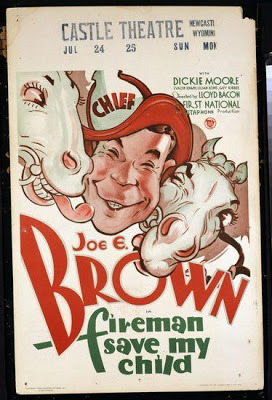
Another entertaining baseball comedy starring Joe E. Brown, following in the footsteps of "Alibi Ike," which I watched about a year ago. This time around, there's the additional twist of Brown being an enthusiastic volunteer fireman as well as a reluctant baseball phenom. Full of family friendly sports laffs and some not-so-family-friendly pre-Code content. (Were bras not invented in 1932?) There's also a great scene near the end where our hero sets an office ablaze to demonstrate his new invention and no one seems to be upset.
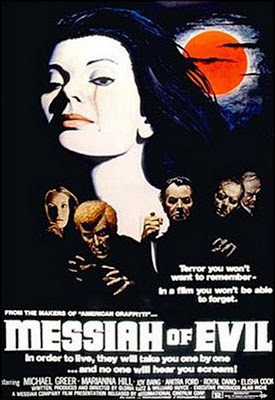
I'd read a lot about this 1973 oddity written and directed by William Huyck and Gloria Katz, the writers of "American Graffiti," but it still didn't prepare me for how strange, spooky and downright effective it is at generating an ominous mood and distinct case of bad vibes. Mariana Hill plays a young woman trying to reconnect with her artist father, but she has the distinctive misfortune of stumbling into the creepiest town on Earth just as the population is slowly but surely descending into madness. Impossible to describe and equally impossible to forget, "Messiah of Evil" manages to create a feeling of dread from the opening frames, building the tension with imaginative setpieces in a grocery store, a movie theater and an artist's studio, where the colossal murals only add to the unease. It's slow, it's dated and it's pretentious, but don't let that fool you -- it's also one of the best horror movies I've seen in a long, long time.
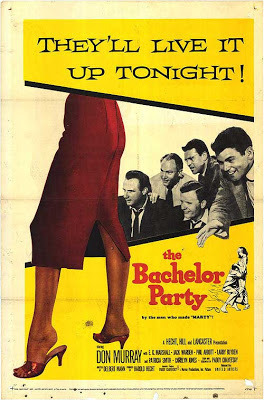
Another one where the poster promises something other than the movie delivers. Paddy Chayefsky wrote the screenplay, but this more "Marty" than "Network," focusing on the endless neuroses of a young married guy (Don Murray) and the friends he hangs out with at the most depressing bachelor ever thrown. Even the great Jack Warden's attempt to spice things up with a few stag films meets only with whining, moping and more talk, talk, talk. Keep an eye out for Carolyn Jones (Morticia Addams herself) as a Greenwich Village chick who almost -- but not quite -- sleeps with our hero.
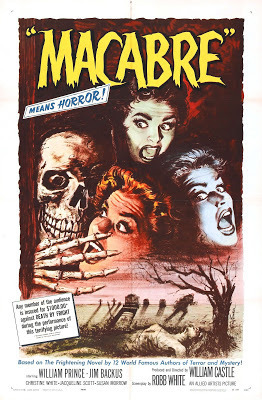 A vintage William Castle chiller, with a doctor racing against time to find his daughter, who's been buried alive by someone seeking revenge. Like most Castle movies, it's smooth and sharp-looking, managing to achieve fairly impressive results on what must've been a pretty low budget. But the central idea -- lots of people acting like morons when you think they'd be a lot more concerned about a little girl running out oxygen -- is both so goofy and so disturbing that the movie never really springs to life. Or death, as the case may be.
A vintage William Castle chiller, with a doctor racing against time to find his daughter, who's been buried alive by someone seeking revenge. Like most Castle movies, it's smooth and sharp-looking, managing to achieve fairly impressive results on what must've been a pretty low budget. But the central idea -- lots of people acting like morons when you think they'd be a lot more concerned about a little girl running out oxygen -- is both so goofy and so disturbing that the movie never really springs to life. Or death, as the case may be.
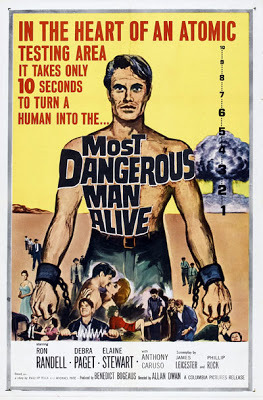
Speaking of low budgets, this forgotten 1960 film has one of the strangest behind-the-scenes budget tales I've ever heard. According to DVD Savant columnist Glenn Erickson's excellent article (read it here), producer Benedict Bogeaus split his script into two parts, trying to convince the Mexican unions that it was a TV series in an attempt to paythe lower fees. When it was discovered the movie was, in fact, a feature film, Bogeaus had to pay full price for his crews, and he had little left to actually, you know, make the movie. As it stands "Most Dangerous Man Alive" looks stunningly cheap, with blown-out photography, bare bones sets and locations and a script that barely makes sense. But, like many no-budget movies, where it fails as cinema it succeeds as folk art, and it's definitely worth a look -- if you can ever find it. (I managed to catch it on TCM -- it's not on DVD or Blu-ray.)
* the return of "Mad Man," "Game of Thrones," "Veep" probably, along with a long weekend spent with my buddies at C2E2.

I love looking at that poster and imagining some action-starved movie lover buying his ticket, sitting down in the theater and being confronted with Walter Hill's notoriously slow-paced drama about a stoic driver (Ryan O'Neal) and the somewhat more excitable cop (Bruce Dern) pursuing him. An obvious influence on last year's "Drive" (right down to the bare-bones title), it's not as stylish and, frankly, a tad on the boring side. (Ryan O'Neal isn't exactly Ryan Gosling.) But the driving scenes are still impressive (especially one where O'Neal deliberately destroys the car he's driving) and it has just enough oddball touches to make it worth watching. It's not, however, the movie that poster is promising. Consider yourself warned.

Another entertaining baseball comedy starring Joe E. Brown, following in the footsteps of "Alibi Ike," which I watched about a year ago. This time around, there's the additional twist of Brown being an enthusiastic volunteer fireman as well as a reluctant baseball phenom. Full of family friendly sports laffs and some not-so-family-friendly pre-Code content. (Were bras not invented in 1932?) There's also a great scene near the end where our hero sets an office ablaze to demonstrate his new invention and no one seems to be upset.

I'd read a lot about this 1973 oddity written and directed by William Huyck and Gloria Katz, the writers of "American Graffiti," but it still didn't prepare me for how strange, spooky and downright effective it is at generating an ominous mood and distinct case of bad vibes. Mariana Hill plays a young woman trying to reconnect with her artist father, but she has the distinctive misfortune of stumbling into the creepiest town on Earth just as the population is slowly but surely descending into madness. Impossible to describe and equally impossible to forget, "Messiah of Evil" manages to create a feeling of dread from the opening frames, building the tension with imaginative setpieces in a grocery store, a movie theater and an artist's studio, where the colossal murals only add to the unease. It's slow, it's dated and it's pretentious, but don't let that fool you -- it's also one of the best horror movies I've seen in a long, long time.

Another one where the poster promises something other than the movie delivers. Paddy Chayefsky wrote the screenplay, but this more "Marty" than "Network," focusing on the endless neuroses of a young married guy (Don Murray) and the friends he hangs out with at the most depressing bachelor ever thrown. Even the great Jack Warden's attempt to spice things up with a few stag films meets only with whining, moping and more talk, talk, talk. Keep an eye out for Carolyn Jones (Morticia Addams herself) as a Greenwich Village chick who almost -- but not quite -- sleeps with our hero.
 A vintage William Castle chiller, with a doctor racing against time to find his daughter, who's been buried alive by someone seeking revenge. Like most Castle movies, it's smooth and sharp-looking, managing to achieve fairly impressive results on what must've been a pretty low budget. But the central idea -- lots of people acting like morons when you think they'd be a lot more concerned about a little girl running out oxygen -- is both so goofy and so disturbing that the movie never really springs to life. Or death, as the case may be.
A vintage William Castle chiller, with a doctor racing against time to find his daughter, who's been buried alive by someone seeking revenge. Like most Castle movies, it's smooth and sharp-looking, managing to achieve fairly impressive results on what must've been a pretty low budget. But the central idea -- lots of people acting like morons when you think they'd be a lot more concerned about a little girl running out oxygen -- is both so goofy and so disturbing that the movie never really springs to life. Or death, as the case may be.
Speaking of low budgets, this forgotten 1960 film has one of the strangest behind-the-scenes budget tales I've ever heard. According to DVD Savant columnist Glenn Erickson's excellent article (read it here), producer Benedict Bogeaus split his script into two parts, trying to convince the Mexican unions that it was a TV series in an attempt to paythe lower fees. When it was discovered the movie was, in fact, a feature film, Bogeaus had to pay full price for his crews, and he had little left to actually, you know, make the movie. As it stands "Most Dangerous Man Alive" looks stunningly cheap, with blown-out photography, bare bones sets and locations and a script that barely makes sense. But, like many no-budget movies, where it fails as cinema it succeeds as folk art, and it's definitely worth a look -- if you can ever find it. (I managed to catch it on TCM -- it's not on DVD or Blu-ray.)
Published on May 04, 2013 12:05
April 30, 2013
Great Moments in Comics History, Part 20
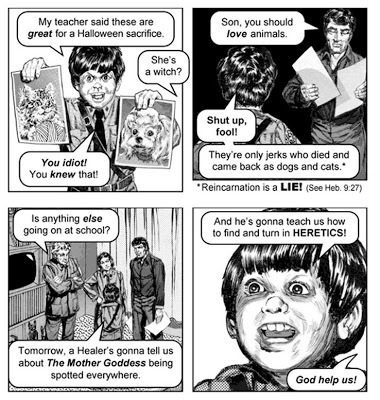
Bobby tells his parents what he learned in school.
The Last Generation, script by Jack T. Chick, art by Fred Carter. (Read the whole thing here.)
Published on April 30, 2013 18:29
April 19, 2013
From the Bookshelves: 'Mental Hygiene'
Sixth in a series of random, rambling explorations of my library
Like I've said more than a few times, I love books about obscure movies, and movies don't get much more obscure than the long-lost short films generations of American students endured in various schoolrooms. Nearly everyone has seen at least one of these movies, but -- at least until they were mocked on "Mystery Science Theater 3000" in the 1990s -- few people ever gave them a second thought, much less remembered them into adulthood.
With their low-budgets, amateur actors and decidedly dated ideas about society, these movies are easy (and tempting) to mock, but the best thing about Ken Smith's 1999 book, "Mental Hygiene," is that it takes them seriously. Smith looks beyond the sometimes silly surfaces of films like "Good Grooming for Girls" and "Don't Smoke Pot" to explore the history, ideas and motivations that lie beneath.
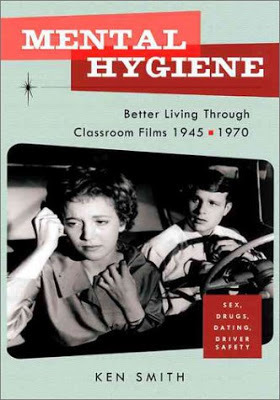
His book, subtitled "Better Living Through Classroom Films, 1945 to 1970," examines these instructional shorts from several fascinating angles. After explaining exactly why these films appeared right after World War II (Short answer: Adults were terrified of teens, and small film companies saw a wide open market), Smith surveys the genres (Fitting In, Dating, Drugs, Bloody Highways and others) and uncovers a wealth of information about the studios who produced them. Then, with the historical and social context out of the way, Smith dives into the meat of the book -- detailed, funny, synopses/reviews of more than 250 classroom films, with hundreds of well-chosen frame grabs sprinkled throughout. It's great fun, perfect for reading in short bursts.
You might even be familiar with a few of the movies. "Lunchroom Manners" is the movie Pee-wee Herman showed during his original HBO special, with a rascal named Phil taking a colossal piece of cake in the cafeteria. "Marijuana" is a classic anti-drug rant hosted by an apparently stoned Sonny Bono. "Mr. B Natural" is a hilariously nightmare-inducing promo film for musical instruments starring a hyperactive woman as the (male) title character. And "The Story of Menstruation" is one of those movies that the girls were shown, this one distinct because it was produced by none other than the Walt Disney Company.
The most fascinating movies in the book are the ones produced by a guy named Sid Davis, a former stand-in for John Wayne who was inspired to create his first movie, "The Dangerous Stranger," after reading about the molestation of a girl in 1949. (The Duke himself helped finance that film.) Met with surprising success, Davis realized that while other, bigger companies had the market cornered on movies about dating, etiquette and popularity, they tended to avoid darker topics. That's all Sid needed to know.
Over the next several years, Sid cornered the market on what Smith calls "social armageddon," cranking out low-budget terror films focused on rape, molestation, drinking, drugs, car accidents, fatal carelessness and other brutal topics. Because of those low budgets (and the intended audiences), Davis' movies had those horrors happen off camera, but they're still pretty startling to modern eyes. You can hardly believe any movie is willing to address those topics, much less movies meant to be shown in elementary school classrooms. And that's just the tip of the iceberg in Smith's book. All these companies have fascinating behind-the-scenes stories, though admittedly, few of them are as memorable as Sid's.
In a Primer section at the beginning of the book, Smith answers the question "Where can I see these films?" with a curt "You can't," explaining that almost all existing copies are in the hands of private collectors, libraries or stock film companies. That might have been true in 1999, when "Mental Hygiene" was originally published, but thankfully it's not true now. Because of companies like Something Weird or DVD collections like the Educational Archives series, these old classroom films are easier to see than ever. The folks at Criterion included clips from Centron's films on its "Carnival of Souls" DVD, because director Herk Harvey worked for Centron. (I highly recommend that set, by the way). Heck, you don't even have to buy a DVD to see those films. Here, for your entertainment and, most importantly, education, is "The Bottle and the Throttle" from the man himself, Mr. Sid Davis. With some smart searching, you can find dozens of others. Enjoy!
And drive safely...
Like I've said more than a few times, I love books about obscure movies, and movies don't get much more obscure than the long-lost short films generations of American students endured in various schoolrooms. Nearly everyone has seen at least one of these movies, but -- at least until they were mocked on "Mystery Science Theater 3000" in the 1990s -- few people ever gave them a second thought, much less remembered them into adulthood.
With their low-budgets, amateur actors and decidedly dated ideas about society, these movies are easy (and tempting) to mock, but the best thing about Ken Smith's 1999 book, "Mental Hygiene," is that it takes them seriously. Smith looks beyond the sometimes silly surfaces of films like "Good Grooming for Girls" and "Don't Smoke Pot" to explore the history, ideas and motivations that lie beneath.

His book, subtitled "Better Living Through Classroom Films, 1945 to 1970," examines these instructional shorts from several fascinating angles. After explaining exactly why these films appeared right after World War II (Short answer: Adults were terrified of teens, and small film companies saw a wide open market), Smith surveys the genres (Fitting In, Dating, Drugs, Bloody Highways and others) and uncovers a wealth of information about the studios who produced them. Then, with the historical and social context out of the way, Smith dives into the meat of the book -- detailed, funny, synopses/reviews of more than 250 classroom films, with hundreds of well-chosen frame grabs sprinkled throughout. It's great fun, perfect for reading in short bursts.
You might even be familiar with a few of the movies. "Lunchroom Manners" is the movie Pee-wee Herman showed during his original HBO special, with a rascal named Phil taking a colossal piece of cake in the cafeteria. "Marijuana" is a classic anti-drug rant hosted by an apparently stoned Sonny Bono. "Mr. B Natural" is a hilariously nightmare-inducing promo film for musical instruments starring a hyperactive woman as the (male) title character. And "The Story of Menstruation" is one of those movies that the girls were shown, this one distinct because it was produced by none other than the Walt Disney Company.
The most fascinating movies in the book are the ones produced by a guy named Sid Davis, a former stand-in for John Wayne who was inspired to create his first movie, "The Dangerous Stranger," after reading about the molestation of a girl in 1949. (The Duke himself helped finance that film.) Met with surprising success, Davis realized that while other, bigger companies had the market cornered on movies about dating, etiquette and popularity, they tended to avoid darker topics. That's all Sid needed to know.
Over the next several years, Sid cornered the market on what Smith calls "social armageddon," cranking out low-budget terror films focused on rape, molestation, drinking, drugs, car accidents, fatal carelessness and other brutal topics. Because of those low budgets (and the intended audiences), Davis' movies had those horrors happen off camera, but they're still pretty startling to modern eyes. You can hardly believe any movie is willing to address those topics, much less movies meant to be shown in elementary school classrooms. And that's just the tip of the iceberg in Smith's book. All these companies have fascinating behind-the-scenes stories, though admittedly, few of them are as memorable as Sid's.
In a Primer section at the beginning of the book, Smith answers the question "Where can I see these films?" with a curt "You can't," explaining that almost all existing copies are in the hands of private collectors, libraries or stock film companies. That might have been true in 1999, when "Mental Hygiene" was originally published, but thankfully it's not true now. Because of companies like Something Weird or DVD collections like the Educational Archives series, these old classroom films are easier to see than ever. The folks at Criterion included clips from Centron's films on its "Carnival of Souls" DVD, because director Herk Harvey worked for Centron. (I highly recommend that set, by the way). Heck, you don't even have to buy a DVD to see those films. Here, for your entertainment and, most importantly, education, is "The Bottle and the Throttle" from the man himself, Mr. Sid Davis. With some smart searching, you can find dozens of others. Enjoy!
And drive safely...
Published on April 19, 2013 20:03
April 16, 2013
Great Moments in Comics History, Part 19
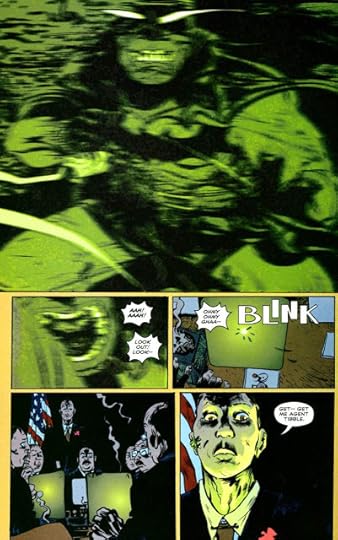
Batman strikes terror into their hearts.
Batman: Year 100; script, pencils and inks by Paul Pope; colors by Jose Villarrubia.
Published on April 16, 2013 17:26
April 10, 2013
Great Moments in Comics History, Part 18
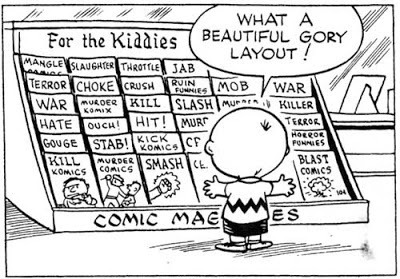
Charlie Brown surveys a selection of sequential art, circa 1952.
Peanuts comic strip by Charles Schulz, June 22, 1952.
Published on April 10, 2013 17:34
April 4, 2013
Great Moments in Comics History, Part 17
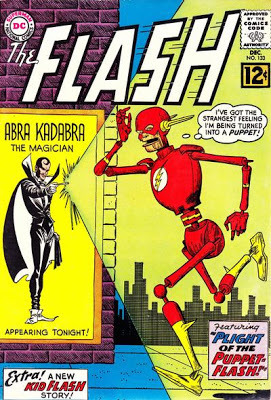
The Flash has the strangest feeling he's being turned into a puppet.
"The Plight of the Puppet Flash!" Flash #133, script by John Broome, cover pencils by Carmine Infantino, inks by Murphy Anderson
RIP, Carmine Infantino. You changed the form of the Flash (several times), but you also changed the face of comics.
Published on April 04, 2013 21:07
April 1, 2013
Movies I watched in March
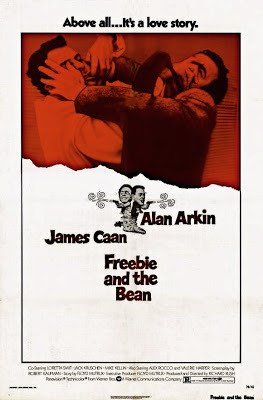
I was seven years old in 1974 when this Richard Rush action/comedy was released, and believe me, culturally speaking, that was a long, long time ago. For one thing, "Bean" is so named because he's Mexican-American (and played by non-Latino Alan Arkin -- Valerie Harper, also non-Latino, I believe, plays his wife.) And the villain of the film -- spoiler alert -- is a cross-dressing scoundrel who winds up getting killed with such zest and barely disguised glee that he earned this movie a scathing mention in "The Celluloid Closet," Vito Russo's history of homosexuality in films. Vintage racism and homophobia aside, "Freebie and the Bean" is the sort of largely plotless, mayhem-filmed ode to property destruction you just don't see anymore, at least in the context of a cop movie. As a matter of fact, given all the stereotypes that were screened and vehicles smashed in the 1980s, this intriguing little curio was actually ahead of its time.
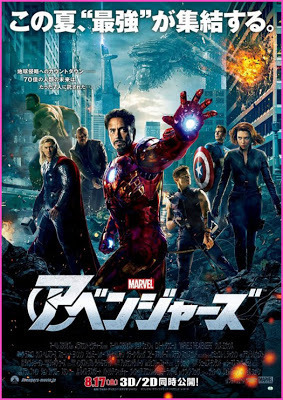
I've seen it a couple of times, and you probably have to. It holds up beautifully, zips right along and gives each and every character at least one satisfying moment of emotional impact. That must be almost impossible to do in a movie like this, and it's why "The Avengers" has probably set the standard (a near-impossible standard, to boot) for super-hero movies to come.
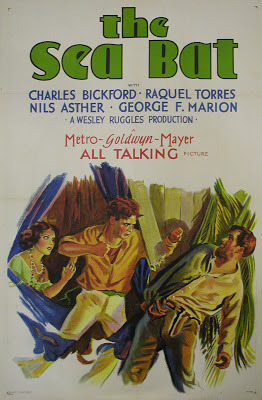
What a strange little movie about a giant manta ray and a bit of romantic intrigue. Want to read more about it ... a LOT more? Then just click here .
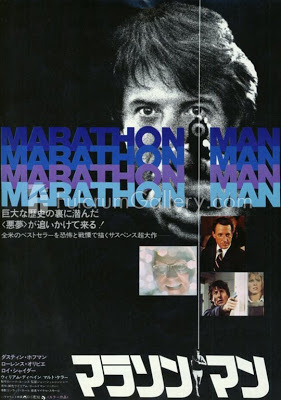
Though I've seen just about every conspiracy-themed thriller of the 1970s, I somehow kept missing this one, which lacks the all-encompassing conspiracy of a movie like "The Parallax View" but still includes plenty of paranoia, vicious deaths and a great use of grimy New York locations. Dustin Hoffman is fine in the title role, and Lawrence Olivier, of course, is bracingly creepy as the ex-Nazi and current dentist, but if you ask me, Roy Scheider steals the show as Hoffman's shady brother. Scheider doesn't get as much attention as other actors of the era, but man, he had a hell of a run -- this, "Jaws," "The French Connection," "The Seven-Ups" and All That Jazz," among many others.
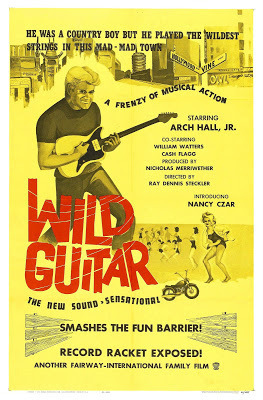
One of the many offbeat movies I first encountered through that damned "Golden Turkey Awards" book from the Medveds (and there are two songs from the movie on the "Golden Turkey" LP that was released a few years later). Admittedly, Arch Hall Jr. is a bit of an acquired taste, but something about this movie and the strange little world it depicts fascinated me, and I really got a kick out of its fable about a country boy finding fame, fortune and love in the big city (Los Angeles circa 1962). It's a low-budget movie (written, produced and co-starring Hall's dad and directed by the legendary Ray Dennis Steckler, who also co-stars), but that bargain basement quality lends it a certain strange authenticity, from the waitress with the strange eyebrows to the small market TV station where our hero makes his debut. Not exactly good, but very interesting.
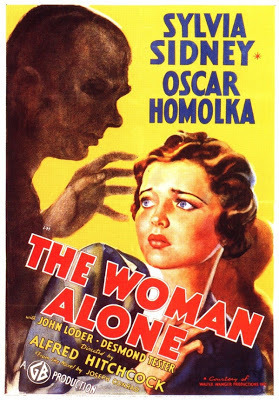
Better known under the title "Sabotage," this early Hitchcock thriller is very good, with striking camerawork and compositions, and the unusual setting of a family-run movie theater. Sylvia Sidney (believe it or not, that's supposed to be her on that poster) is perfectly cast as a woman in way over her head, and the scene with the kid, the bomb and the bus is one of the master of suspense's most effective nail-biters.
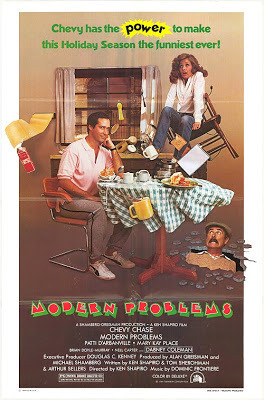
I actually saw this movie in the theater way back in 1981 when I was a freshman in high school, but even then I could tell its slapdash combination of social satire, bad special effects and Chevy Chase's rapidly fading star power added up to a whole lot of not much. It was fascinating, 32 years later, to see just how amazingly '80s the movie was: Chase plays an air-traffic controller, gets doused with nuclear waste and wears a Members Only Jacket. Plus, the cast includes such '80s luminaries as Dabney Coleman (the best thing about the film), Patt D'Arbanville, Mary Kay Place and Nell Carter -- and one of the big laffs features telekinetic Chevy Chase snorting a giant line of something that looks very much like cocaine. Ah, what a decade.
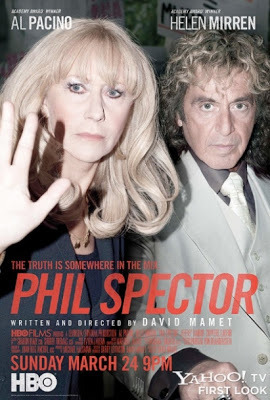
Not bad, but by all accounts, a flight of sheer fantasy. I'm a huge fan of Phil Spector's music, and consider his 1963 Christmas album one of the timeless achievements in pop, but I've never heard anyone have anything good to say about him personally, and that includes quotes from his own mouth. The HBO movie, written and directed by David Mamet, tries to cook up some crazy theory about lack of blood spatter and a gun being pulled out of a mouth, but it's so far-fetched -- and in such contrast to what happened in the courtroom -- that the movie carries a disclaimer basically admitting it's a work of fiction. Jeffrey Tambor is very good, though.
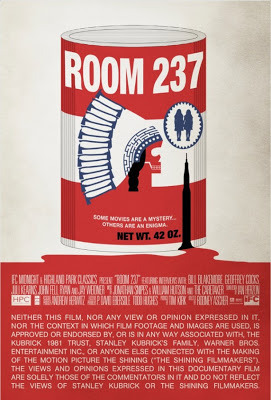
Wow. I'd been waiting forever to see this one, ever since I heard a documentary about the crazy theories inspired by "The Shining" was in the works. It's great stuff, full of the sort of far-flung movie love and free-form paranoia I was hoping for, all brought to life with hypnotic visuals replaying -- in some cases over and over and over and over -- key scenes from Kubrick's movie. Not that any of these ideas necessarily hold water -- the moon landing confession is especially nonsensical -- but that's what makes "Room 237" so interesting. It's not so much a documentary about "The Shining" as it is a doc about the human mind and the strange corridors it tends to wander . My take? Whether intended or accidental, the weird little dissonances and continuity hiccups in "The Shining" all do their part to make watching Kubrick's film a beautifully unnerving experience.
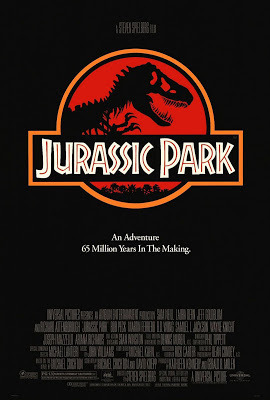
Allie's in the middle of some serious dinosaur love, so I showed her Spielberg's 1993 thriller. It holds up surprisingly well, mostly because Spielberg and company had the good sense to see the limits of CGI even when it was the hot new thing and not rely on it for every special effect. That T-rex attack, which uses models, full-sized constructions and some computer images, looks great -- and better than CGI sequences made mere months ago. Speaking of computers, Allie's favorite part -- and I could have predicted this -- was when Wayne Knight's character leaves a mocking caricature on his computer that wags its finger at Samuel Jackson and Richard Attenborough. Comedy!
Published on April 01, 2013 20:05
March 30, 2013
Great Moments in Comics History, Part 16
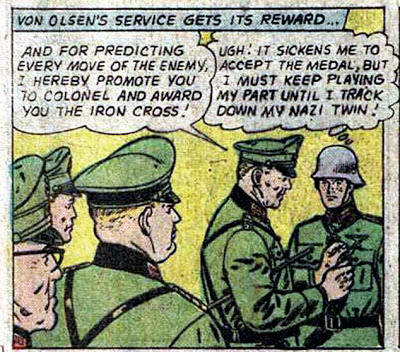
Jimmy Olsen is honored for helping the Nazis.
"Jimmy's D-Day Adventure!" Superman's Pal Jimmy Olsen #86, script by Leo Dorfman, pencils by Curt Swan, inks by George Klein, letters by Milton Snapinn.
Published on March 30, 2013 14:40
Will Pfeifer's Blog
- Will Pfeifer's profile
- 23 followers
Will Pfeifer isn't a Goodreads Author
(yet),
but they
do have a blog,
so here are some recent posts imported from
their feed.



